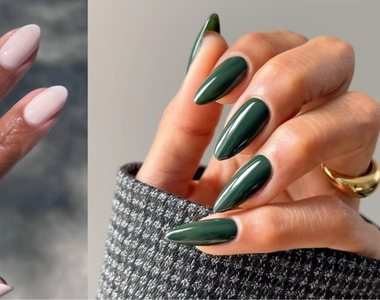
Dermatologists often say that botox is an art, as well as a science, and that there is no "right" age to start injections. However, depending on the age when you decide to get your first treatment, the experience may be different.
Botox prevents dynamic wrinkles by temporarily weakening the "core" muscle beneath them, says Dendy Engelman, a dermatologist in New York for Well & Good.
"Dynamic wrinkles are caused by the movement of this muscle during facial expressions. Over time, they engrave on your skin and turn into visible static lines, even when the face is at rest. With Botox treatment, muscle contraction is weakened and dynamic wrinkles are reduced.
The question is: What is the right age to start?
Doctors say that the answer to the question "when" depends on the stage of the wrinkles and how deep they are "engraved" on the face.
"The moment is fixed when you realize that dynamic wrinkles are making progress and turning into static lines / wrinkles."
What to expect from botox, according to the respective age groups
- In the 20s
In the 20s, botox is mainly used for preventive purposes. At this point, wrinkles are considered the "first stage", which means that they appear when you make an angry face or raise your eyebrows too high.
"There is a small misconception about what 'preventive botox' is," says Sarmela Sunder, a plastic surgeon. If the lines are not there, you do not need botox, but if the lines appear when you make a facial habit and stay there for a few seconds or minutes later, there you will start to create permanent wrinkles in the skin architecture. So, at that point, you do Botox just to prevent those lines from appearing. ”
Usually, these dynamic wrinkles first appear on the forehead, between the eyebrows and around the eyes. Preventive Botox does not allow those lines to be etched on the skin and softens any wrinkles that exist. People who start early and do little will not need much later, but on the other hand this process can be delayed as long as possible through other treatments, especially if the wrinkles are not visible. Let’s not forget that a 20-year-old's face stays fresh and beautiful and the purpose of botox, is by no means to change that.
- In the 30s
According to dr. Sunder, most patients come around the time when they are in their late 20s and early 30s. This is the time when natural collagen production begins to slow down, and their dynamic wrinkles begin to progress toward static lines or the “second phase”. While the first phase dynamic wrinkles appear only when your face is moving, static wrinkles are always there, even when the face is "resting".
It should be noted that the amount of botox you take tends to correspond to your age. Usually, someone between the ages of 20 and 30 gets the amount known as "baby botox".
The amount of botox you take also depends on the strength of the muscles in a particular area. In general, the quantity number helps to dictate how long the effect of the injection will last.
"The larger the number of units, the longer the product will last."
- In the 40s
If a wrinkle is firmly embedded in your skin, to the point where it looks as if the makeup is clinging to it, then we are dealing with the "third stage". At this point, botox is used more as a treatment than as a prevention and can help soften lines that are on the skin but cannot eradicate them completely.
- In the 50s and beyond
When your wrinkles progress to the "fourth stage", which is characterized by deeply carved lines, "botox can not do that much," says Dr. Sunder.
It can soften the movement of the muscles, so that the lines do not deepen even more, but it will not change the lines that have already been formed to a considerable extent. To "eradicate" wrinkles at this age, you will need secondary treatments such as laser, microneedling, etc.
Keep in mind!
One important thing to remember is that starting with botox early can be a double-edged sword. On the one hand, it can prevent wrinkles from forming on your face, but on the other hand: If you do a lot of botox, your body can get used to it, demanding more and more.

Source: Well & Good







